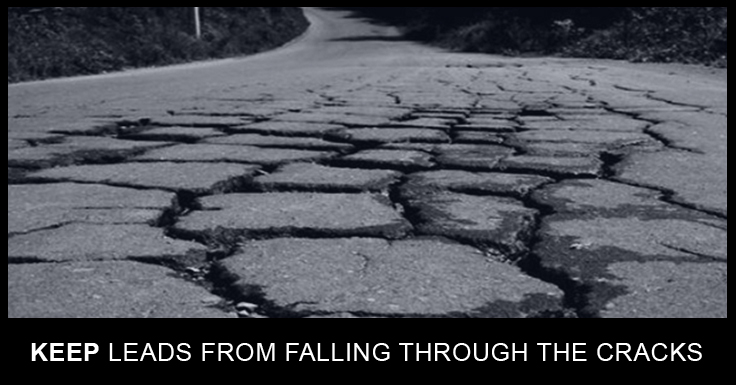
Why hiring an ISA with natural curiosity is important
July 24, 2017
Learn the closing strategies of top ISAs
August 7, 2017How an ISA helps keep leads from falling through the cracks

Does this happen to you: a lead comes in and you call it, only to find out that the person isn’t ready to sell, or you go on an appointment and the sellers need a little more time before they’re ready to put a sign in their front yard.
In either case, you make a note to call these folks back in the future. But then you get busy and you push it off or forget to call at all until you find the sticky with the reminder in a stack of papers. Then, when you call back, the sellers have already listed (and maybe even sold their home) with someone else.
It’s a huge kick in the pants and quite honestly, it sucks.
By hiring an ISA and implementing a few simple systems, you can make this problem go away forever. The systems are key if you want to make it work.
According to Charles Gilkey from the visionary group, Productive Flourishing, there is a difference between systems and processes: “A process is a conceptual sequence of events that enables people in a business to do what they do. Systems are what’s used to execute the process.”
When applying systems to your real estate organization, you need to remember that systems support processes that support people. In some cases the systems are actual hardware and technology and in other cases, they are means by which things are done within a process. For the purpose of our discussion, we’re going to focus on the latter.
Now, there are a number of systems that you can employ within your inside sales department, but the three listed below are some of the most important in helping your ISA to hit it dead solid perfect each day:
- Feedback Loop: In most cases, your ISAs are not going to have a lot of experience on listing appointments and your OSAs aren’t going to have a lot of experience working the phones for 500 dials a day. As a result of that, it’s important for the ISAs and the OSAs to give and receive feedback to and from each other on a regular basis. Having this system in place helps your ISA improve his/her appointment-setting skills and it helps build your OSA’s confidence in your ISA. Additionally, it helps the ISA put the OSA in position to have an amazing listing presentation with a high probability of securing the listing.
The End of Day report provided to you by your ISA can play a huge part in giving them and the OSA some great ground to cover within this feedback loop. The daily reporting of numbers by your ISA will show the OSA trends and details as it they pertain to the OSAs listing appointments and pipeline.
I spoke earlier about the ISA/OSA meeting to discuss the OSA’s pipeline, but I chose to cover it again because I believe this part of the sales process is just that important.
- Progressive Profiling: If you recall, I discussed the importance of having your ISA take notes in your CRM for the purposes of building strong relationships with prospects and clients as well as to help other team members stay up to date on what’s happening with their pipeline. There is a specific system that is used to take and keep notes based on the successive conversations your ISA is having with a prospect, and it’s called progressive profiling.
Through progressive profiling, your ISA gathers pertinent information—information related to both the home sale as well as personal—from each contact with the prospect. Each time contact is made, more information is gathered and rapport is strengthened. The goal is for your ISA to gather enough information each time on the phone to be increasingly more effective in influencing the prospect to move forward with setting an appointment. The key is to take good enough notes with key data to be used on the next call(s) without 1) sounding like a broken record and saying the same thing on each call, and 2) writing a book every time you take notes from a call. The end result of this system is more qualified listing appointments with sellers who are very open to working with you because the relationship between your ISA and them has been built strongly by your ISA.
- Checks and Balances: Once you have the process for dealing with the life cycle of a lead nailed down, you need a system to track the inflow of leads and what happens with each of them. The system must account for each lead source, the total number of leads from each source, the cost per lead from each source, how many contacts are made to each lead source, the total number of appointments from each lead source, and then the total number of leads from each lead source. In addition to that, your system also needs to adjust the reporting to give you seasonal results as well as results by ISA and OSA so you can see how seasonality and personnel affect the overall results.
Having this system in place helps you determine which lead source(s) to continue using, which one(s) to stop using and if your team members are converting at the level they should be. This will lead to huge savings in time and money and help you determine if you have a leads problem, training problem, and/or a people problem…and put you in a position to solve the problem.


